Covid-19 Update
Given the impact of the 2019-nCoV virus (SARS-CoV-2, COVID-19) on everyday life, it made sense to look into what we know about the virus right now and how that knowledge is driving possible treatments and vaccines, to get life moving back to normalcy. Much of the material was taken from research articles, which are cited at the end, and distilled into a more approachable format.
Scientists working on the 2019-nCoV virus (SARS-CoV-2, COVID-19) have been studying its genome and found a large similarity with the virus responsible for the SARS outbreak of 2003, meaning that the two viruses are related, like cousins.[i] The virus is a single strand RNA virus that targets the patient’s innate immune system,[ii] and respiratory system.[iii] A fusion spike protein was identified from COVID-19 which binds to proteins on the target cell membrane, angiotensin-converting enzyme 2 (ACE2), resulting in the ejection of a subunit and altering the shape of the fusion spike.[iv] This allows the virus to merge with the and inject the virus RNA into the cell.[v] ACE2 is a surface enzyme on cells found in the lungs, arteries, heart, kidneys, and intestines,[vi] and is involved in the humoral immune response, recruitment of leukocytes, and generation of reactive oxygen species.[vii]
Once inside a host or patient, the virus is subject to the host’s immune system. However, uncontrolled activation of the host immune response also can cause cytokine release syndrome, where immune response chemicals, cytokines, are over-released into the patient.[viii] Scientists still have an incomplete understanding of cytokine release syndrome, but studies show that activation by an antigen can result in stimulation of secondary cells and non-immune cells, which triggers the humoral and cellular responses, causing further release of immune cytokines that spirals out of control.[ix] Three immune cytokines, IL-6, IL-10, and IFN-γ are the most commonly found in CRS, with IL-6 spiraling the effects of the other cytokines.[x] This can result in fever, hypotension, clotting issues, difficulty breathing, nervous systems dysfunction, fatigue, headache, cough, kidney damage, cardiac dysfunction, neuronal damage which can be mild to severe, such as confusion, hallucinations, difficulty with speech, seizures, and other organ dysfunction.[xi] In COVID-19, the virus attacks cells in the lungs, causing a release on the immune cytokine IL-6.[xii]
COVID-19 has been found to overactivate T-cells,[xiii] which may result in a reduction in T-cells over time.[xiv] In severe COVID-19, immune cytokines can increase even as the T-cell numbers drop.[xv] As such, the effects seen in COVID-19 infection, such as fever, exhaustion, dry cough, aching, nasal congestion, runny nose, sore throat, diarrhea, and difficulty breathing, clotting problems, and septic shock[xvi] may be due to an overactivation of the host immune system.
Once in the patient’s host cells, the virus uses host enzyme, the viral RNA is converted into viral proteins, which are then cut into active parts by viral enzymes, called proteinases.[xvii] The virus uses topoisomerase III-beta, to replicate, akin to Dengue and Zika virus,[xviii] and viral proteins are used to form new virus particles in the cell, eventually resulting in death of the host cell and release of the virus.
Work is ongoing on potential treatments for COVID-19, targeting viral access to host cells or replication. Treatment strategies typically revolve around three goals; (1) maintaining an infected patient; (2) stopping virus from entering a cell; and (3) stopping the virus from replicating in the cell. Strategy (1) includes ventilation,[xix] something that is also seen in cytokine release syndrome (discussed above).[xx] Further, COVID-19 can result the cytokine release syndrome which appears to be similar to other cytokine release syndromes.[xxi] In cancer-based CRS, therapies against IL-6 have been used (toclizumab and siltuximab or clazakizumab, antibodies against the IL-6 receptor and soluble IL-6), as well as immune chemical sponges to remove the cytokines from the patient.[xxii] A such, suggested treatments for COVID-19 include IL-6 inhibitors,[xxiii] low-dose NSAIDs and steroids to control the inflammation and immune response (though ibuprofen was linked to an increase in ACE2 which is used by COVID-19 to enter cells), and immunosuppressants.[xxiv] Strategy (2) includes targeting the fusion spike or covering the virus particle. Initial studies on the fusion spike show that, despite strong similarities between SARS-CoV and COVID-19, antibodies against the SARS-CoV fusion spike did not have significant interaction with the COVID-19 fusion spike.[xxv] However, development is ongoing for antibodies or RNA treatments that target the COVID-19 fusion spike to prevent COVID-19 entry into host cells.[xxvi] Another option is carbohydrate-binding agents that bind to the virus and prevent it from entering a cell.[xxvii] Strategy (3) targets the host cell or enzymes that are used by the virus to commandeer the host. Suggestions include HIV protease inhibitors, chemotherapy to stop cell replication, and stop the virus from using the host cell enzymes to replicate or compounds that prevent the virus from forming new virus particles in the cell.[xxviii]
Hopefully, significant progress is made against COVID-19 through one or more of the therapeutic strategies. In the meantime, we are doing our best to limit the spread of this pandemic, by having our employees work from home and limit exposure, along with so much of the country. Stay safe and healthy during these trying times.
[i] https://www.niaid.nih.gov/news-events/atomic-structure-novel-coronavirus-protein, last accessed April 16, 2020; Wrapp, et al., Cryo,EM structure of the 2019-nCoV spike in the prefusion conformation. Science. 2020 Mar 13; 367(6483): 1260-3.
[ii] Steward, Host pathways in coronavirus replication and COVID-19 pre-clinical drug target identification using proteomic and chemoinformatic analysis. Drug Target Review. Mar. 30, 2020, https://www.drugtargetreview.com/article/58628/host-pathways-in-coronavirus-replication-and-covid-19-pre-clinical-drug-target-identification-using-proteomic-and-chemoinformatic-analysis/, last accessed April 16, 2020.
[iii] Yang & Wang, COVID-19: a new challenge for human beings. Cell Mol Immunol. 2020 Mar 31.
[iv] Wrapp, et al., Cryo,EM structure of the 2019-nCoV spike in the prefusion conformation. Science. 2020 Mar 13; 367(6483): 1260-3; https://www.drugtargetreview.com/news/56895/scientists-demonstrate-how-covid-19-infects-human-cells/, last accessed April 16, 2020; https://www.drugtargetreview.com/article/58628/host-pathways-in-coronavirus-replication-and-covid-19-pre-clinical-drug-target-identification-using-proteomic-and-chemoinformatic-analysis/, last accessed April 16, 2020.
[v] Wrapp, et al., Cryo,EM structure of the 2019-nCoV spike in the prefusion conformation. Science. 2020 Mar 13; 367(6483): 1260-3.
[vi] https://en.wikipedia.org/wiki/Angiotensin-converting_enzyme_2, last accessed April 16, 2020
[vii] Bernstein, et al., Angiotensin-converting enzyme in innate and adaptive immunity. Nat Rev Nephrol. 2018 May; 14(5): 325-36.
[viii] Xiao, et al., Plasma exchange can be an alternative therapeutic modality for severe cytokine release syndrome after chimeric antigen receptor-T cell infusion: a case report. Clin Cancer Res. 2019 Jan 1; 25(1): 29-34; Zhang, et al., The cytokine release syndrome (CRS) of severe COVID-19 and interleukin-6 receptor (IL-6R) antagonist tocilizumab may be the key to reduce the mortality. Int J Antimicrob Agents. 2020 Mar 29; 105954.
[ix] Shimabukuro-Vornhagen, et al., Cytokine release syndrome. J Immunother Canc. 2018 Jun 15; 6(1):56
[x] Shimabukuro-Vornhagen, et al., Cytokine release syndrome. J Immunother Canc. 2018 Jun 15; 6(1):56
[xi] Xiao, et al., Plasma exchange can be an alternative therapeutic modality for severe cytokine release syndrome after chimeric antigen receptor-T cell infusion: a case report. Clin Cancer Res. 2019 Jan 1; 25(1): 29-34; Shimabukuro-Vornhagen, et al., Cytokine release syndrome. J Immunother Canc. 2018 Jun 15; 6(1):56.
[xii] Zhang, et al., The cytokine release syndrome (CRS) of severe COVID-19 and interleukin-6 receptor (IL-6R) antagonist tocilizumab may be the key to reduce the mortality. Int J Antimicrob Agents. 2020 Mar 29; 105954.
[xiii] Yang & Wang, COVID-19: a new challenge for human beings. Cell Mol Immunol. 2020 Mar 31.
[xiv] Oon, Fighting COVID-19 exhausts T cells. Nat Rev Ummunol. 2020 Apr 6:1
[xv] Zhang, et al., The cytokine release syndrome (CRS) of severe COVID-19 and interleukin-6 receptor (IL-6R) antagonist tocilizumab may be the key to reduce the mortality. Int J Antimicrob Agents. 2020 Mar 29; 105954.
[xvi] https://www.who.int/news-room/q-a-detail/q-a-coronaviruses, last accessed April 16, 2020; Yang & Wang, COVID-19: a new challenge for human beings. Cell Mol Immunol. 2020 Mar 31.
[xvii] Shereen, et al., COVID-19 infection: origin, transmission, and characteristics of human coronaviruses. J Adv Res. 2020 Mar 16; 24:91-8.
[xviii] https://news.fiu.edu/2020/researchers-target-cells-own-machinery-in-fight-against-covid-19
[xix] https://www.aacn.org/education/online-courses/covid-19-pulmonary-ards-and-ventilator-resources, last accessed April 17, 2020.
[xx] Shimabukuro-Vornhagen, et al., Cytokine release syndrome. J Immunother Canc. 2018 Jun 15; 6(1):56
[xxi] Zhang, et al., The cytokine release syndrome (CRS) of severe COVID-19 and interleukin-6 receptor (IL-6R) antagonist tocilizumab may be the key to reduce the mortality. Int J Antimicrob Agents. 2020 Mar 29; 105954.
[xxii] Shimabukuro-Vornhagen, et al., Cytokine release syndrome. J Immunother Canc. 2018 Jun 15; 6(1):56
[xxiii] Zhang, et al., The cytokine release syndrome (CRS) of severe COVID-19 and interleukin-6 receptor (IL-6R) antagonist tocilizumab may be the key to reduce the mortality. Int J Antimicrob Agents. 2020 Mar 29; 105954; Liu, et al., Can we use interleukin-6 (IL-6) blockade for coronavirus disease 2019 (COVID-19)-induced cytokine release syndrdome (CRS)? J Autoimmunity. 2020 Apr 10; 102452; Russell, et al., Associations between immune-supressive and stimulating drugs and novel COVID-19- a systematic review of current evidence. Ecancermedicalscience. 2020 Mar 27; 14:1022.
[xxiv] Russell, et al., Associations between immune-supressive and stimulating drugs and novel COVID-19- a systematic review of current evidence. Ecancermedicalscience. 2020 Mar 27; 14:1022.
[xxv] Wrapp, et al., Cryo,EM structure of the 2019-nCoV spike in the prefusion conformation. Science. 2020 Mar 13; 367(6483): 1260-3.
[xxvi] Wrapp, et al., Cryo,EM structure of the 2019-nCoV spike in the prefusion conformation. Science. 2020 Mar 13; 367(6483): 1260-3.
[xxvii] Russell, et al., Associations between immune-supressive and stimulating drugs and novel COVID-19- a systematic review of current evidence. Ecancermedicalscience. 2020 Mar 27; 14:1022.
[xxviii] Russell, et al., Associations between immune-supressive and stimulating drugs and novel COVID-19- a systematic review of current evidence. Ecancermedicalscience. 2020 Mar 27; 14:1022.


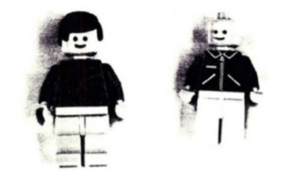


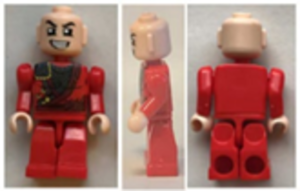


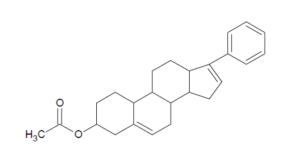 In another precedential opinion, the Federal Circuit Court of Appeals continued its focus on defining claim term meanings in light of the specification and prosecution history.
In another precedential opinion, the Federal Circuit Court of Appeals continued its focus on defining claim term meanings in light of the specification and prosecution history.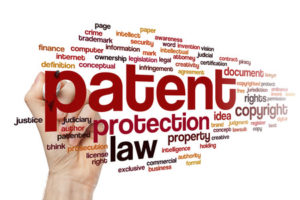 The Federal Circuit has been active in clarifying what constitutes patentable subject matter in the medicinal and biotechnology fields, issuing a precedential and nonprecedential opinions over the last few weeks. The cases highlight the importance of including manipulation steps in patent claims, i.e. where a human provides an active step in the claimed subject matter that is not readily known.
The Federal Circuit has been active in clarifying what constitutes patentable subject matter in the medicinal and biotechnology fields, issuing a precedential and nonprecedential opinions over the last few weeks. The cases highlight the importance of including manipulation steps in patent claims, i.e. where a human provides an active step in the claimed subject matter that is not readily known.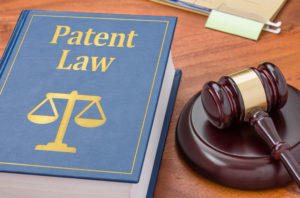 Since the Supreme Court issued its opinion in the Association for Molecular Pathology v. Myriad Genetics, Inc. and Mayo Collaborative Services v. Prometheus Laboratories, Inc., it has been increasingly difficult for medical diagnostics to become patented or survive a patentability challenge. In 2012, the U.S. Supreme Court decisions, which applied to a breast cancer test relying on BRCA1 gene mutations and test determining appropriate dosages of thiopurine drugs that are used in autoimmune diseases, determined that any test that relied upon a correlation between naturally occurring events, such as the presence of a mutated gene or drug metabolite, was related to natural laws and natural phenomena and hence not patent eligible subject matter without more inventive material in the claims.
Since the Supreme Court issued its opinion in the Association for Molecular Pathology v. Myriad Genetics, Inc. and Mayo Collaborative Services v. Prometheus Laboratories, Inc., it has been increasingly difficult for medical diagnostics to become patented or survive a patentability challenge. In 2012, the U.S. Supreme Court decisions, which applied to a breast cancer test relying on BRCA1 gene mutations and test determining appropriate dosages of thiopurine drugs that are used in autoimmune diseases, determined that any test that relied upon a correlation between naturally occurring events, such as the presence of a mutated gene or drug metabolite, was related to natural laws and natural phenomena and hence not patent eligible subject matter without more inventive material in the claims.